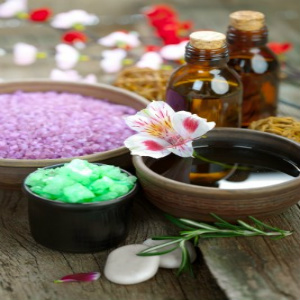Traditional Thai massage therapy (also known as naud phaen boran or Nuad Bo’Rarn) combines aspects of yoga, meditation, and massage. Practitioners impart the benefits of Thai massage by using their hands, feet, knees, and legs to move you through a series of stretches that resemble yoga positions, while also applying deep pressure to your muscles with body weight.
Thai massage therapy (also known as naud phaen boran or Nuad Bo’Rarn) combines aspects of yoga, meditation, and massage. Practitioners impart the benefits of Thai massage by using their hands, feet, knees, and legs to move you through a series of stretches that resemble yoga positions, while also applying deep pressure to your muscles with body weight.
As one of the oldest forms of manual medicine, Thai bodywork dates back about 2,500 years in Thailand. However, the roots of the practice came from India with the Buddhist doctor Jivaka Kumar Bhaccha (also known as Shivago Komarpaj).
The massage developed in two main styles: Southern Style, taught at Wat Pho in Bangkok, and Northern Style, taught at the Massage Hospital of the Foundation of Shivago Komarpaj in Chang Mai. Southern Style tends to be more intense. However, Thai massage has numerous diverse lineages and approaches. See Encyclopedia of Thai Massage: A Complete Guide to Traditional Thai Massage Therapy and Acupressure.
Video Demo
Kam Thye Chow, author of Thai Yoga Massage: A Dynamic Therapy for Physical Well-Being and Spiritual Energy, gives a massage demo.
Benefits of Thai Massage
Nuad Bo’Rarn is one of the four main components of traditional Thai medicine (the others are nutrition, herbal medicine, and spiritual practices). The benefits of Thai massage include reducing stress, increasing energy and flexibility, improving range of motion, improving circulation, and centering the mind and body.
The basis of this bodywork is energetic, not physical. The purpose of the massage techniques is to clear blockages in the energy lines called sen (similar to Chinese meridians or Indian yogic nadis) by stimulating specific points. Thai bodywork techniques facilitate and stimulate the flow of intrinsic energies and release blockages to allow the body to balance itself and become healthy and pain-free, physically, the mentally, emotionally, and spiritually, according to the Thai Massage Manual.
The Art of Traditional Thai Massage describes the art as a spiritual practice closely connected with the teachings of the Buddha. Giving this massage was considered a physical application of metta or “loving kindness.” Good Thai bodywork practitioners work in a meditative mood, remaining spiritually aware, so they have the ability to treat people according to their different needs.
The massage is done on a padded mat on the floor with you wearing clothing in which you can move easily. No oil is also used and sessions can last from one to three hours.
Thai Massage Videos
The following video is the introduction to Mastering Thai Massage with instructor Richard Gold from Real Bodywork.
Introduction to Thai massage from instructor Jill Burynski.
A full one-hour massage.
Excerpt from Thai Yoga Vinyasa – a full 90-minute step-by-step Thai sequence from instructor Gabriel Azoulay.
More information: Institute of Thai Massage-USA
Photo Credit: Tara Angkor Hotel (Flickr) [CC-BY-2.0], via Wikimedia Commons
